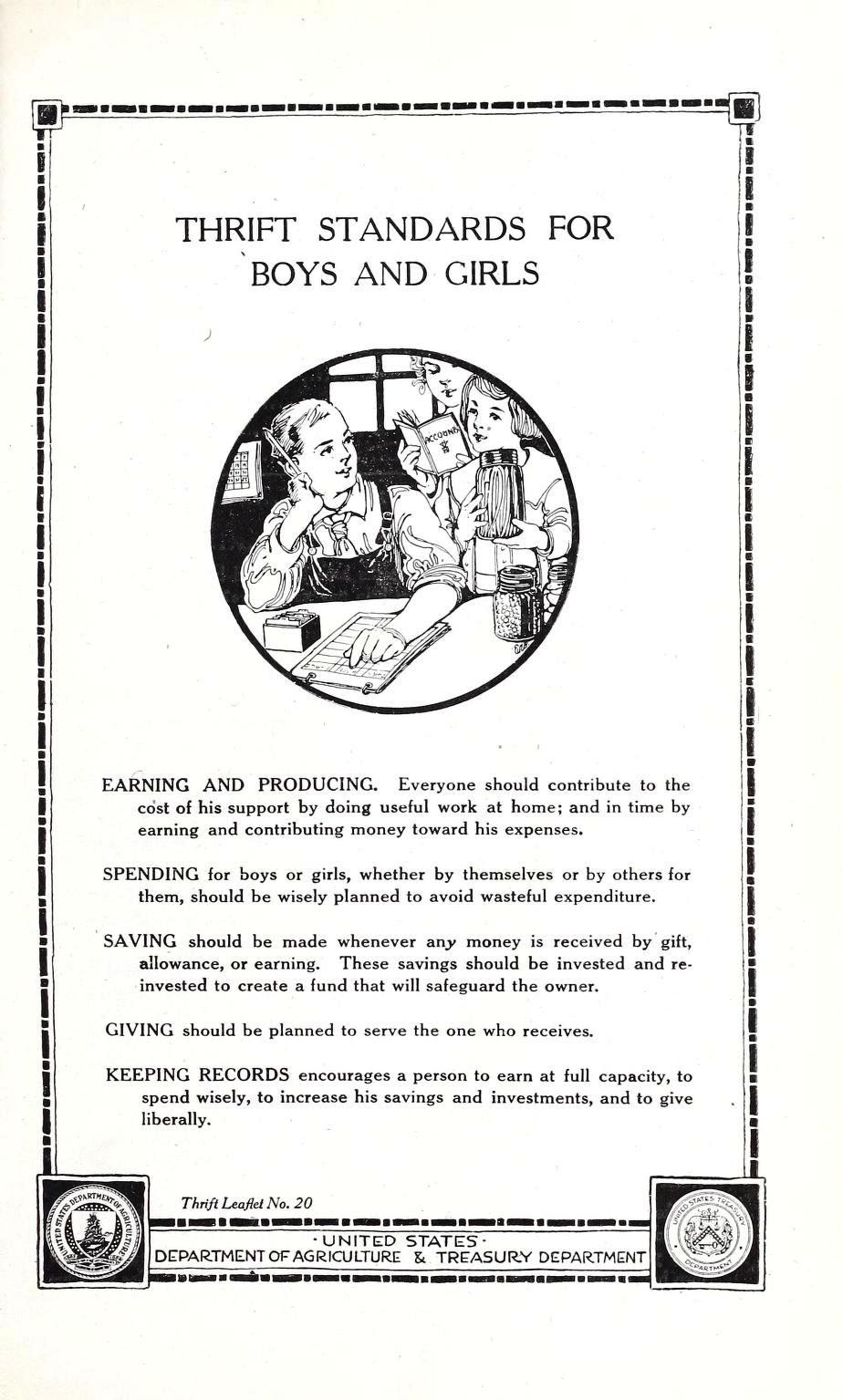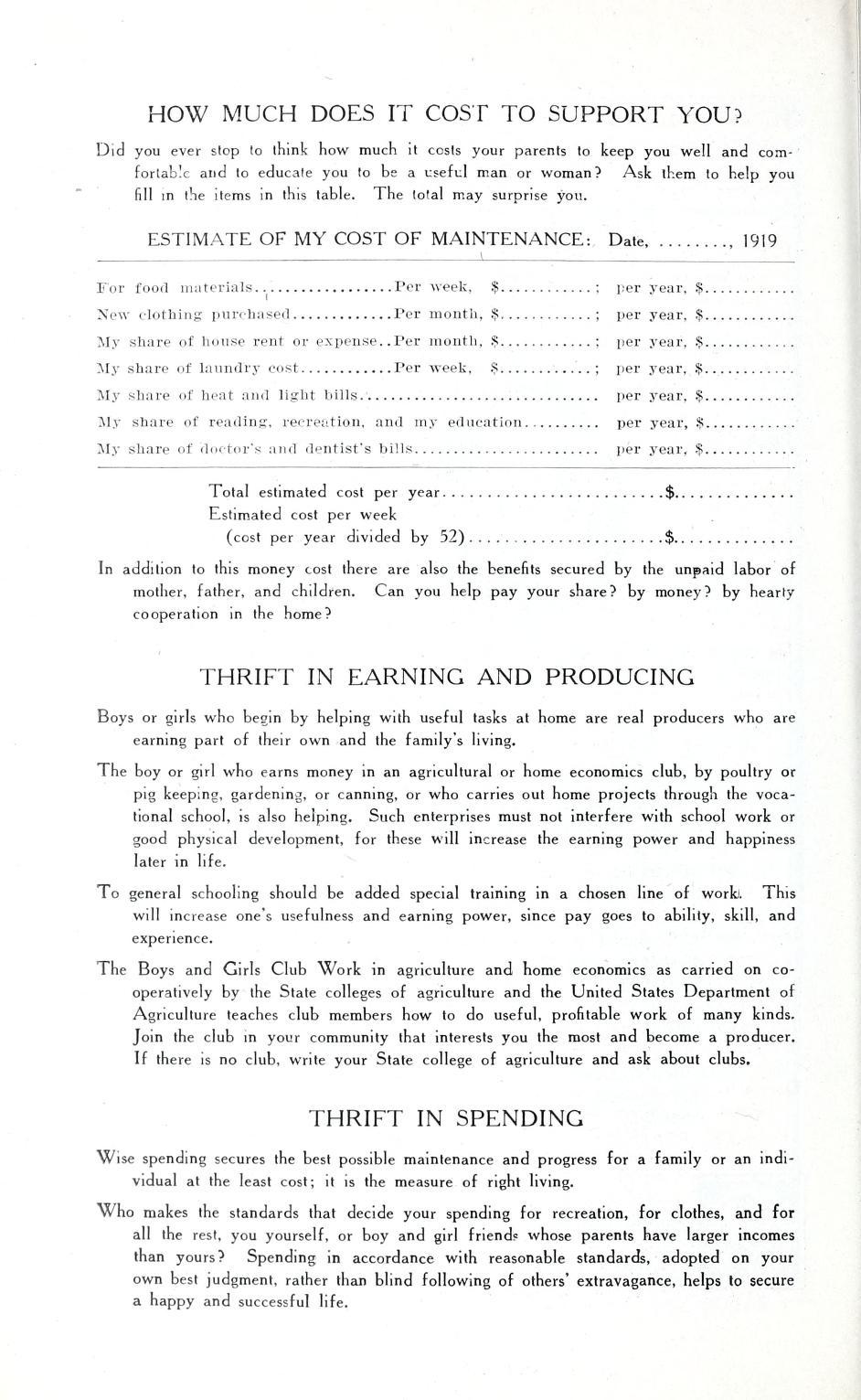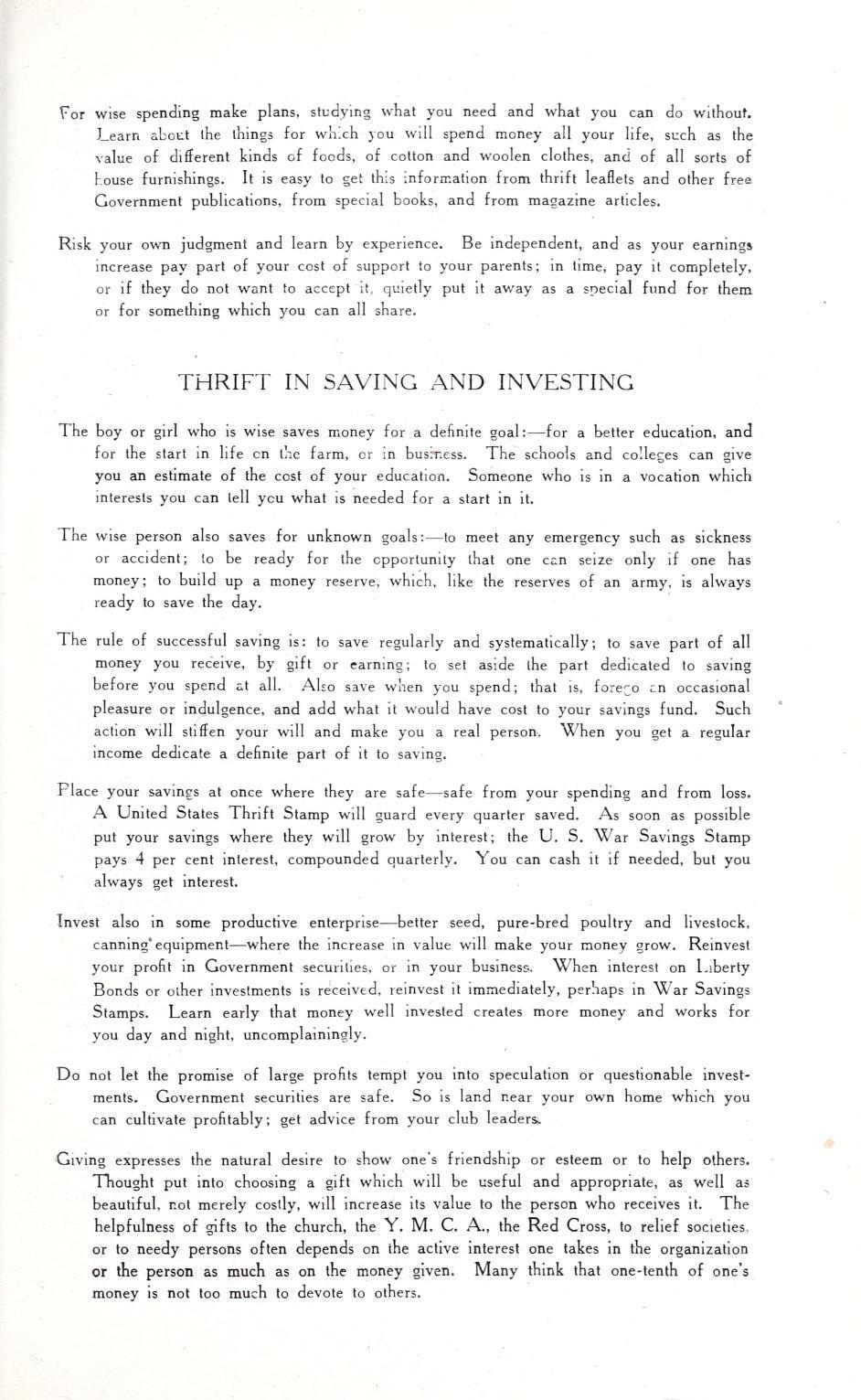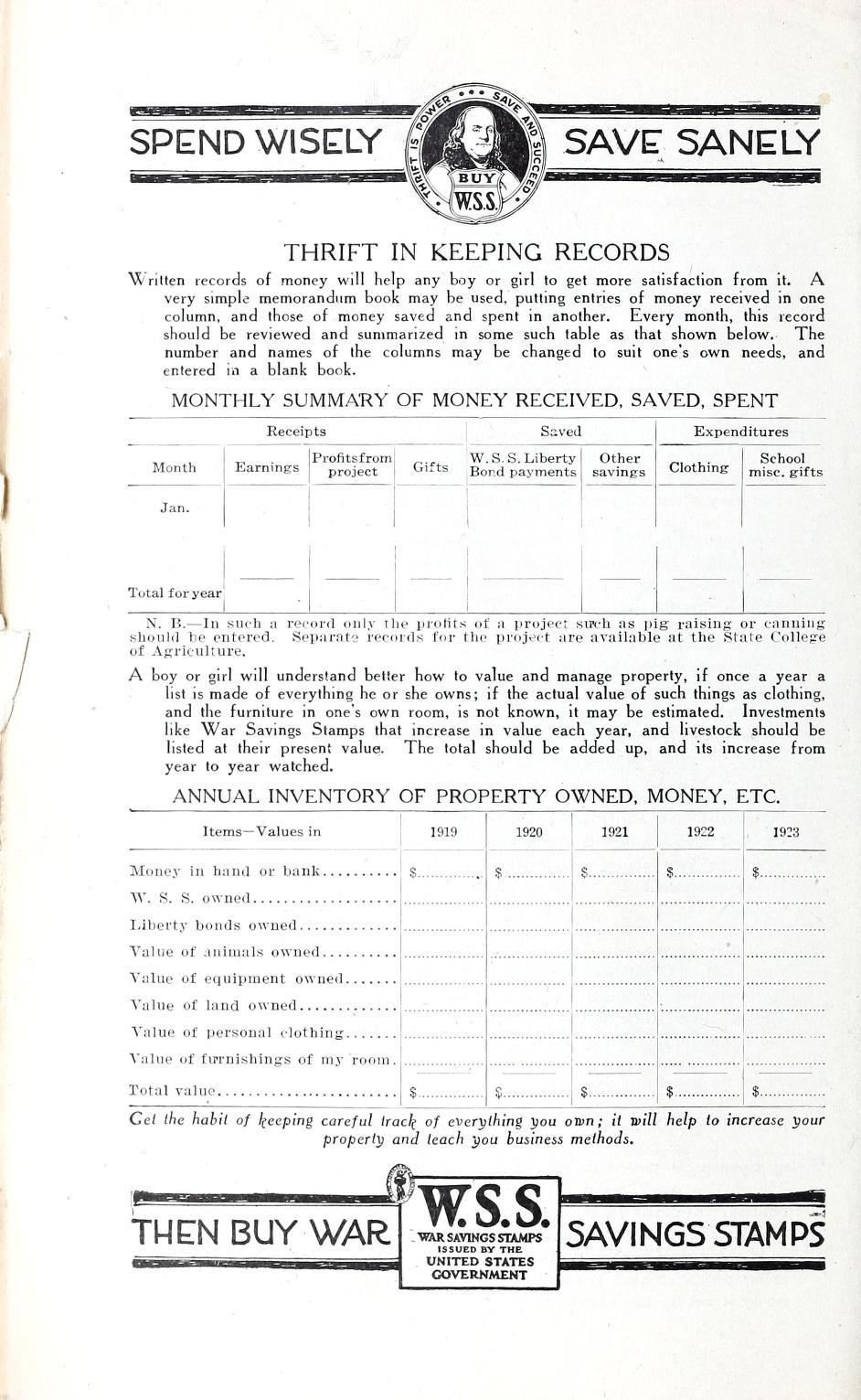The Vault is Slate’s history blog. Like us on Facebook, follow us on Twitter @slatevault, and find us on Tumblr. Find out more about what this space is all about here.
This government pamphlet, from 1918, is a relic from the thrift movement of the 1910s and 1920s. It’s part of a series of 20 brochures, produced by the U.S. Department of Agriculture and the Treasury, promoting the virtue to Americans of all ages. Other installments included “Saving Food by Proper Care,” “Thrift on the Farm,” “How to Remove Stains,” and “Wise Spending Saves.”
Andrew L. Yarrow writes in his book Thrift: The History of an American Cultural Movement that for-profit and nonprofit entities (the YMCA; insurance companies; Sears, Roebuck) joined the government in the interwar campaign to teach thrift. Thrift promotion reached across party and ideological lines, drawing in both “progressives dedicated to improving the well-being of the working class through collective effort and conservatives intent on promoting individual self-reliance and integration into the nation’s free enterprise system.”
Like other parts of the thrift movement, the push to teach thrift to children was strongest in the 1920s. Teachers used textbooks and lesson plans designed to encourage the virtue, and schools established savings banks that students could use as practice. Mechanical piggy banks—the examples Yarrow points to have Benjamin Franklin’s face and name on them—sold briskly, and Boy and Girl Scouts signed Thrift Creeds and worked for Thrift Badges.
In January 1920, the National Thrift Week Committee designated the week of Franklin’s birthday Thrift Week, promoting discussion of savings on Monday, budgets on Tuesday, insurance on Wednesday, home-owning on Thursday, the making of a will on Friday, the paying of debts on Saturday, and sharing and charity on Sunday.
During the Depression, when New Deal economists argued that consumer spending would strengthen the flagging economy, the tenets of the thrift movement began to look old-fashioned. Between the 1930s and the 1950s, Yarrow writes, “the teaching of thrift gradually became transformed into teaching Americans to be good consumers.”
Thanks to Mitch Fraas for the tip.

State Library of Pennsylvania/Internet Archive.

State Library of Pennsylvania/Internet Archive.

State Library of Pennsylvania/Internet Archive.

State Library of Pennsylvania/Internet Archive.